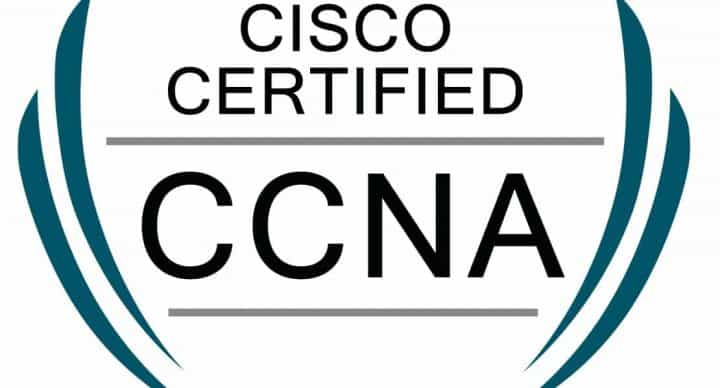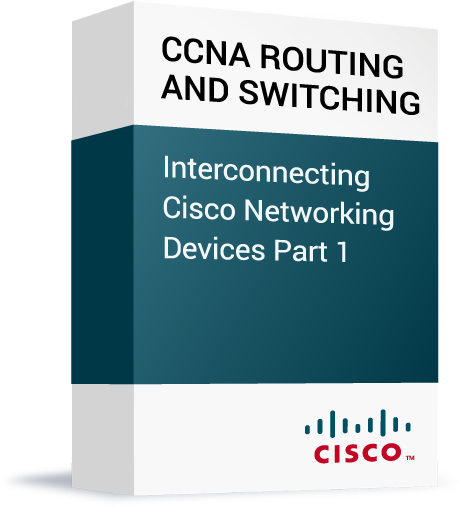Minibasket
Bejelentkezés
Keresés
Telefon
Számalk Oktatási és Informatikai Zrt.
Cím: 1118 Budapest, Dayka Gábor u. 3.
E-mail: training##kukac##szamalk.hu
Telefon: +36 1 491 8974
CCNA

CCNA – alap hálózatüzemeltetési ismeretek, routing, switching, hibakeresés tudás megszerzése és vizsgára való felkészítése
Implementing and Administering Cisco Solutions (CCNA)
Kód: CCNAThis course gives you basic theory and practical knowledge of computer networks built on IPv4 and IPv6 protocols and provides a solid technical background for follow-up Cisco courses in all fields of technology. This is the official training course for 200-301 Cisco Certified Network Associate (CCNA) certification exam. Selected topics are delivered in the form of self-study modules. This CCNA course is a replacement of former ICND1 and ICND2 courses with added new topics about technologies such as SD-Access, SD-WAN, basics of programmability and it also contains selected chapters about wireless networking and network security. Engineers, for who CCNA is routing and switching, need classification Pre- and post-sales for network engineers, whose task is big company networks' setup and his support, For starting network engineers, network administrators, IT network one making a support and helpdesk for technicians Before taking this course, you should have: Basic computer literacy Basic PC operating system navigation skills Basic Internet usage skills Basic IP address knowledge There are no formal prerequisites for CCNA certification, but you should make sure to have a good understanding of the exam topics Basic characteristics of IP networks, OSI and TCP/IP model, network media and cabling LAN network, Ethernet protocol Basic switch configuration Configuration and troubleshooting of VLANs and trunks IP addressing (IPv4/IPv6) Basic router configuration Static and dynamic routing inter-VLAN routing Introduction to Open Shortest Path First (OSPF) protocol Basics of Spanning Tree protocol (STP) and Rapid Spanning Tree protocol (RSTP) Configuration and troubleshooting of link aggregation a L3 redundancy WAN networks and protocols VPN networks Configuration and troubleshooting of DHCP, ACL, NAT, Overloading Basic Quality of Service (QoS) concepts Introduction to wireless networks Introduction to network architectures Basics of network programmability and software-defined networks (SDN) Introduction of Cisco DNA Center™, Software-Defined Access (SD-Access) and Software- Defined Wide Area Network (SD-WAN) technologies Cisco device management - configuration backup, software upgrade, licensing, SNMP, syslog and NetFlow Network security and protection from threats Basic steps for security hardening of network devices Objectives Identify the components of a computer network and describe their basic characteristics Understand the model of host-to-host communication Describe the features and functions of the Cisco Internetwork Operating System (IOS®) software Describe LANs and the role of switches within LANs Describe Ethernet as the network access layer of TCP/IP and describe the operation of switches Install a switch and perform the initial configuration Describe the TCP/IP Internet layer, IPv4, its addressing scheme, and subnetting Describe the TCP/IP Transport layer and Application layer Explore functions of routing Implement basic configuration on a Cisco router Explain host-to-host communications across switches and routers Identify and resolve common switched network issues and common problems associated with IPv4 addressing Describe IPv6 main features and addresses, and configure and verify basic IPv6 connectivity Describe the operation, benefits, and limitations of static routing Describe, implement, and verify Virtual Local Area Networks (VLANs) and trunks Describe the application and configuration of inter-VLAN routing Explain the basics of dynamic routing protocols and describe components and terms of Open Shortest Path First (OSPF) Explain how Spanning Tree Protocol (STP) and Rapid Spanning Tree Protocol (RSTP) work Configure link aggregation using EtherChannel Describe the purpose of Layer 3 redundancy protocols Describe basic WAN and VPN concepts Describe the operation of Access Control Lists (ACLs) and their applications in the network Configure Internet access using Dynamic Host Configuration Protocol (DHCP) clients and explain and configure Network Address Translation (NAT) on Cisco routers Learning@Cisco Course overview Page 3 of 5 Describe basic Quality of Service (QoS) concepts Describe the concepts of wireless networks, which types of wireless networks can be built, and how to use Wireless LAN Controllers (WLCs) Describe network and device architectures and introduce virtualization Introduce the concept of network programmability and Software-Defined Networking (SDN) and describe smart network management solutions such as Cisco DNA Center™, Software-Defined Access (SD-Access), and Software-Defined Wide Area Network (SD-WAN) Configure basic IOS system monitoring tools Describe the management of Cisco devices Describe the current security threat landscape Describe threat defense technologies Implement a basic security configuration of the device management plane Implement basic steps to harden network devices
 Kezdő
Kezdő
Designing Cisco Enterprise Networks
Kód: ENSLDThe Designing Cisco Enterprise Networks (ENSLD) v1.0 course gives you the knowledge and skills you need to design an enterprise network. This course serves as a deep dive into enterprise network design and expands on the topics covered in the Implementing and Operating Cisco® Enterprise Network Core Technologies (ENCOR) v1.0 course.This course also helps you prepare to take the exam, Designing Cisco Enterprise Networks v1.0 (ENSLD 300-420), which is part of the CCNP® Enterprise and Cisco Certified Specialist - Enterprise Design certifications. Network design engineers Network engineers System administrators Designing EIGRP Routing Designing OSPF Routing Designing IS-IS Routing Designing BGP Routing and Redundancy Understanding BGP Address Families Designing the Enterprise Campus LAN Designing the Layer 2 Campus Designing the Layer 3 Campus Discovering the Cisco SD-Access Architecture Exploring Cisco SD-Access Fabric Design Designing Service Provider-Managed VPNs Designing Enterprise-Managed VPNs Designing WAN Resiliency Examining Cisco SD-WAN Architectures Cisco SD-WAN Deployment Design Considerations Designing Cisco SD-WAN Routing and High Availability Understanding QoS Designing LAN and WAN QoS Exploring Multicast with Protocol-Independent Multicast-Sparse Mode Designing Rendezvous Point Distribution Solutions Designing an IPv4 Address Plan Exploring IPv6 Deploying IPv6 Introducing Network APIs and Protocols Exploring YANG, NETCONF, RESTCONF, and Model-Driven Telemetry
 Kezdő
Kezdő







